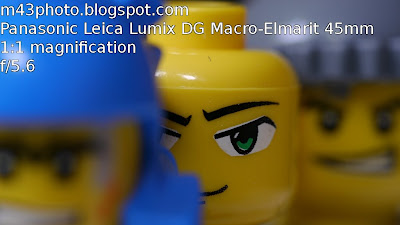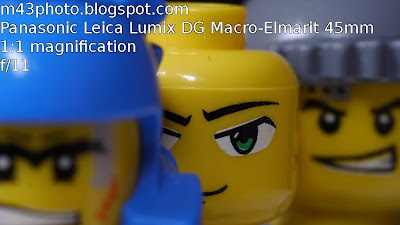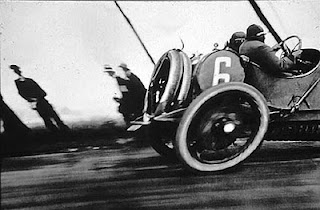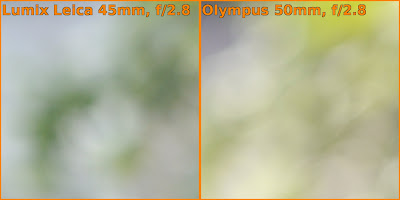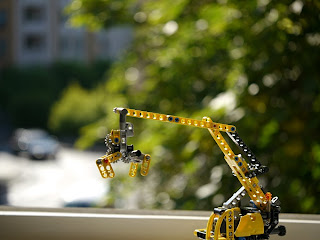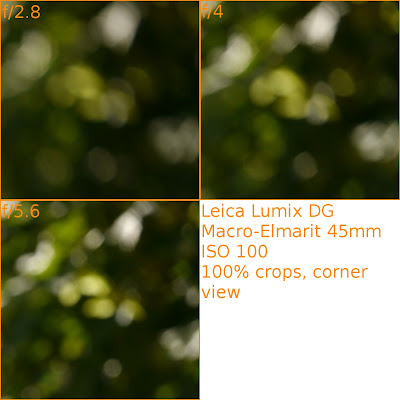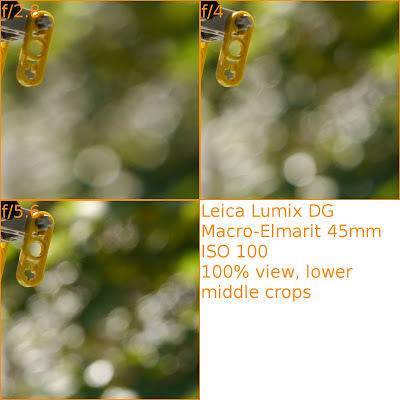Introduction
I have an old legacy tele lens, the Nikkor 200mm f/4 AIS. It is well suited for use on a Micro Four Thirds camera, since both the focus and aperture are operated manually by twisting the rings on the lens. This is in contrast to
Canon EF lenses, in which the aperture is operated electronically, and no adapter is available to control this from a Micro Four Thirds camera.
The lens is pictured here together with the
Panasonic Lumix G 45-200mm f/4-5.6 Mega O.I.S. with the zoom extended to 200mm. The Nikon lens is shown with a
Nikon-M43 adapter attached.
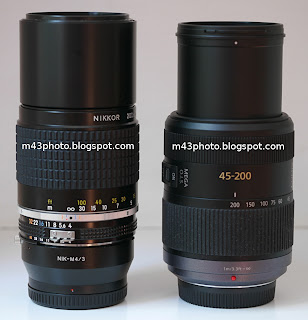 Nikkor 200mm f/4 AIS
Nikkor 200mm f/4 AIS
This is a compact and high quality tele lens. The moderate maximum aperture, f/4, makes it less bulky than professional f/2.8 lenses. However, it still gives good quality images already from f/4.
The construction is fairly simple with five lenses in five groups. This is a mature lens design, and gives a good performance overall. It has nine aperture diaphragm blades.
The lens is made of metal, and the focus ring has a well dampened professional feel. The aperture ring can be set at any size, but has click stops at one unit distance, i.e., f/4, f/5.6, f/8, f/11, f/16, f/22 and f/32.
Lumix G 45-200mm f/4-5.6
The
Panasonic Lumix G 45-200mm f/4-5.6 Mega O.I.S. is a value tele zoom, often sold with a camera in dual lens kits. For the price, it has a good quality construction,
fast autofocus, and good image quality.
Setup
To look examine the bokeh qualities of the lenses, I focused them at their smallest common focus distance, which is 2 meters. The Lumix 45-200mm can focus down to 1 meter. Then I placed some backlit foliage in the background.
Both lenses were
focused manually, by using the magnified view on the Lumix GH1. Here are the images at f/5.6 for both lenses:
 Nikkor 200mm f/4 @ f/5.6
Nikkor 200mm f/4 @ f/5.6 Lumix 45-200mm @ 200mm f/5.6
Lumix 45-200mm @ 200mm f/5.6
What we can note at once, is that the field of view is not the same. The Nikon gives a closer view of the foreground. This surprised me at once, and I made sure to check the EXIF to see that the Lumix picture was indeed taken at 200mm.
However, we can note that the focal length specification is always given at infinity focus, while in this case I am focusing closer to the minimum focus distance. I did confirm that at infinity focus, the field of view of the two lenses is the same.
The Nikkor lens features a traditional focus assembly, which moved the lens elements forward when focusing closer. The Lumix, on the other hand, features internal focusing.
Internal focusing is know to give a change of focal length as the focus is altered. So the effect we are seeing here is not unexpected, and I am guessing the Nikon lens maintains the most correct field of view when focusing closer.
Bokeh
To better compare the bokeh, I am providing 100% crops from the two images above (click to enlarge):

It is pretty difficult to conclude anything from this test. I think I was a bit unlucky with my test subject, it doesn't reveal any bokeh weaknesses that easily. Perhaps we can say that the 45-200mm bokeh at 200mm is a bit more "dirty". But it's hard to point out any significant weakness with any of the bokeh examples.
In the Nikkor 200mm image, it is possible to see the diaphragm blades, since it is stopped down one step. The Lumix bokeh rings, on the other hand, are round, since the lens is not stopped down at all.
The Nikkor could appear to be less affected by flare, which is natural due to it's simpler construction with a much smaller number of lens elements.


 Now, we only need to add the text to complete the "YO DAWG" image:
Now, we only need to add the text to complete the "YO DAWG" image:






